As new generation seeks Jefferson Park’s charm, old-timers stay put
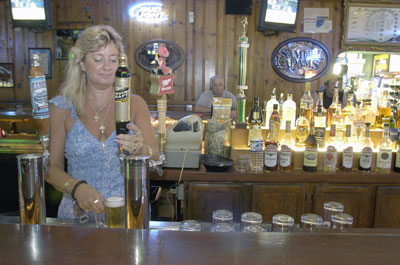
Tell fellow Chicagoans from Lincoln Park to South Shore that you live in Jefferson Park, and the response is the same.
“Jefferson Park. Yeah, that rib place. Gale something. Gale Street, right?”
It’s fitting then, that this story begins at the Gale Street Inn, 4914 N. Milwaukee Ave., an institution as inseparable from Jefferson Park as Milwaukee Avenue itself. It’s a Saturday night, and beyond the bar’s frosted glass divider, the main dining room is wall-to-wall with folks feasting on barbecued ribs. The bar is crowded too, with patrons and a small army of black-vested waiters and bartenders fetching drinks and platters of glistening meat.
The room is all dark wood, subdued lighting, flat-screen TVs and elegant glassware, and over in the corner, a young pianist is serving up strains of “The Girl from Ipanema” on a keyboard.
The food is topnotch and the atmosphere might be described as pleasant or comfortable, but few would call it pretentious. Gale Street’s philosophy revolves around ribs that, well, stick to your ribs. No one’s losing sleep over trendy décor ideas or extravagant presentation.
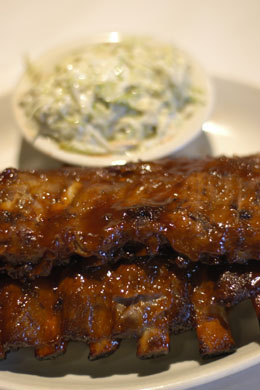
George Karzas, like his father before him, runs the place, but only because the previous owner made a mistake he came to regret. “The guy who sold this place to my father in 1984 thought the city would get worse before it got better,” Karzas says. “That guy walked up to me 10 years ago and said, ‘If I’d known the neighborhood was going to hang on like it did, I never would have sold it.’ The neighborhood has not only hung on, but in infrastructure and in the quality of who lives here, has been made better.”
The Northwest Side neighborhood of Jefferson Park, bordered roughly by Devon, Montrose and Nagle avenues and the CMSP&P railroad tracks, is nobody’s idea of glamorous. But it’s friendly, affordable, convenient and according to some residents, safer than nearby suburbs.
Of course, there’s convenience and then there’s convenience. You might have trouble finding a decaf mocha latte with skim in Jeff Park, but on Milwaukee Avenue, the zimne piwo flows freely. That’s “cold beer” for the uninitiated, and you’ll see signs created circa 1950 advertising it throughout the neighborhood, along with pierogi, golabki, kielbasa and other Polish delicacies. This is the heart of Polonia in Chicago, perhaps the most Polish city outside of Poland, and the delis, bakeries, shops and bars on Milwaukee and other streets draw Polish customers not only from the neighborhood but also from the suburbs and beyond.
At the corner of Lawrence and Central avenues, long-time Jefferson Park resident Ordie Kuchar, a familiar sight walking her tiny, feisty dog, Buttons, says she has everything she needs right here in Jefferson Park.
“I love it,” she says, out for a walk with Buttons. “You know why? Everything’s close: doctors, restaurants, the grocery store, the dollar store. And I love the park. I’m always going around there. There are [only] a few stores on Milwaukee Avenue, but I still go up there. The elderly people are so nice. They always want to talk, and I spend my time talking with them all the time. When I go to Jewel, to Osco, just around the block, they’re so nice.”
In some ways, a walk through Jefferson Park feels like a trip back in time, to a solid 1950s Chicago neighborhood, and not just because that’s the last time many store facades were touched. Small, independently owned businesses still dominate here in an age of corporate chains. Many residents still walk to do their shopping, visit the dentist or eat out. Side streets are lined with sturdy brick bungalows, cottages and two- and three-flats, most with small manicured lawns. And prices, though rising rapidly, are still affordable.
A port of entry
Wherever you encounter Jefferson Parkers, whether hanging with friends late at night at the Blue Angel or Colletti’s restaurants, dancing to old-time standards at Noodles, playing softball in the neighborhood’s eponymous park or shopping in the sparse downtown district near Lawrence and Milwaukee avenues, people offer the same reasons for living here.
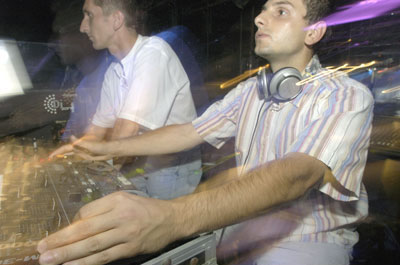
Ordie Kuchar and her husband, Bill, have been married for 40 years, all of them in Jefferson Park, where Bill says the key advantages remain the same.
“I like the old-timers, the old Germans and Polish who live in the neighborhood,” Bill says. “Most people are friendly. It’s changed, but it’s still good in terms of transportation and shopping.”
The neighborhood is still a port of entry for eastern Europeans, particularly Polish immigrants. For these newcomers, Jefferson Park’s Copernicus Foundation and its Copernicus Center, 5216 W. Lawrence Ave., is an anchor. It’s here that the Polish Film Festival in America – the world’s largest – is held each November, and the Taste of Polonia festival every Labor Day weekend.
Jefferson Park, says Copernicus Foundation Executive Director Wanda Majcher, “is like a bridge between the suburbs and downtown of Chicago. It’s very convenient to the train station and the expressway . . . There’s a lot of Polish stores, a lot of Polish businesses, Polish delis and Polish restaurants with bilingual staffs. It feels like home for many [immigrants], especially newcomers who might have difficulties with the language.”
Few residents are more eloquent spokesmen for Jefferson Park than James J. Hodl, who has lived all his 55-plus years there. His youth and early teen years were spent in an apartment on Sunnyside Avenue. At 16, his family moved to a single-family home just four blocks away on the same street. He and his brother inherited the house after their mother passed away in 1998.
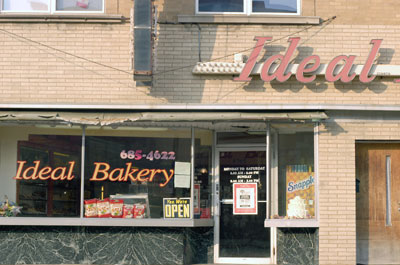
His fond memories of his early years in Jefferson Park include shopping for back-to-school clothes at a couple of dearly-departed stores: Anne’s and Wolke & Kotler, which sat across the street from each other on Milwaukee Avenue, just north of Lawrence. Resnick’s stood nearby, selling clothes and shoes and offering a barber shop and beauty salon on the second floor.
Those stores are long gone, and a CVS Pharmacy replaced the Snack Shop at Milwaukee and Lawrence avenues, home of the best burgers in the neighborhood, according to Hodl. Like many neighborhoods, Jefferson Park never fully recovered from the rise of the automobile, the mall and more recently, big box retailers like Target and Wal-Mart. Milwaukee and Lawrence avenues are still colorful streets with a variety of mom-and-pop shops and ethnic fare, but many storefronts are vacant, underutilized or poorly maintained. The days of bustling business within the neighborhood have faded, and most residents do their major shopping elsewhere.
But Hodl says, Jefferson Park is “still a very nice, safe neighborhood,” and he loves taking long walks around the community. Some of the best strolls are in the fall, when maples add beautiful colors to the streetscape, he says.
One of the biggest changes he has noted is the evolution of Jefferson Park’s housing stock. In his formative years, he recalls empty lots peppering what is now a fully built-out community. Those lots existed amid three-flats and bungalows built during the 1920s and early 1930s.
But starting in about 1954, builders arrived to fill in those lots with smart ranch houses and brick two-flats. “There wasn’t too much building after 1960, because they’d filled the lots,” he said. “Now you see them tearing down stuff to put up new stuff.”
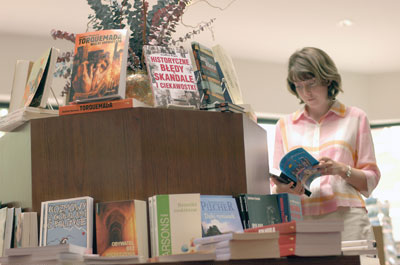
Hodl has also watched a huge escalation in Jefferson Park home prices, one that would have left residents he knew in his youth dumbfounded, he says. In 1970, when he graduated from Southern Illinois University in Carbondale and moved back to the old neighborhood, bungalows near his parents’ home were $40,000. “I was surprised to learn recently that one of the bungalows in my area, when it was sold, they got $280,000,” he reports. “It’s kind of hard to believe that the homes are worth more than a quarter million.”
Among many factors fueling rising prices have been a citywide real estate boom and a shift in the buyers moving to Jefferson Park. In the early 1980s, the community attracted many eastern European immigrants who were buying their first homes in America, Hodl says.
“But for the past 10 years, I’ve noticed that when an older couple moves out of a home, you’re usually getting a family that just had its first kid,” he adds. “They formerly lived in more trendy neighborhoods like Wicker Park or Lincoln Park. The former family was blue collar, and the new families are young professionals.”
Teardowns Generating Concern
If there’s an issue worrying longstanding residents like Hodl and Kuchar, it’s the influx of developers demolishing older single-family homes in the name of progress and profit.
“Some of the old frame homes are disappearing,” Hodl says. “They’re tearing them down and putting up condos . . . They used to cap everything at three stories, and now you have some four-story buildings. That would have been unthinkable in this area several years ago.”
As condos become more prevalent, it seems renters are getting squeezed out, says a Kenny’s Grill waitress named Joanna, who does not want to give her last name. She tells of a couple of women friends her own age who recently moved into apartments with men. No hanky-panky, she stresses. They simply needed roommates to make rent.
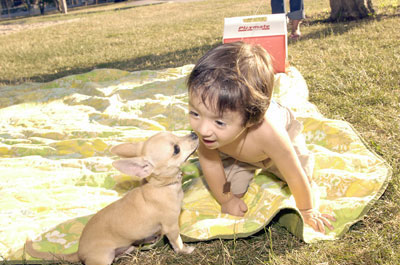
“It’s gotten more difficult for an older single person to survive,” she laments. “Rents have gone from $535 to $750, and that’s just in the last two years.”
But new development and rising rents are also indications that Jefferson Park is becoming more appealing to home buyers, says Jan Robertson, a real estate agent with Century 21 McMullen, 6400 N. Harlem Ave., in the neighboring community of Norwood Park. Robertson, who lives just south of Jefferson Park, has been selling homes in the community for 21 years.
She believes Jefferson Park is being discovered by increasing numbers of home buyers who couldn’t have found it on a map 10 years ago. However, “it’s still a little bit of a secret to many people,” she adds. “Jefferson Park is a small community that doesn’t have the big bucks of Old Irving. But it has a lot of what Old Irving has to offer: convenience to both trains – Blue Line and Metra. And we’ve got decent shopping, walk-to shopping, a post office and library right in our neck of the woods . . . It’s all within walking distance.”
The new construction in Jefferson Park is mostly condominiums and, to a lesser extent, townhomes. And while the prices are stratospheric by historic Jefferson Park standards, they’re a “good value for the money” compared with citywide prices, Robertson says. Large new condominiums with minimal upgrades are fetching $300,000 and higher, while townhomes are selling in the mid-$300,000 range, she estimates.
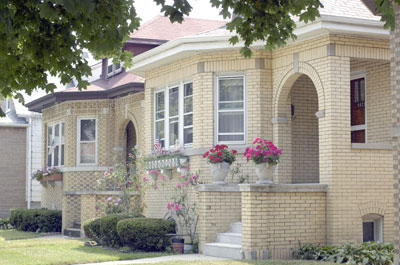
Those prices for condominiums and townhomes are at least $100,000 less than similar product in many neighborhoods farther east and south. But even at these prices, they’re not selling quickly. “I think they’re struggling,” Robertson says of developers. “They’re not selling as fast as they thought.”
Concord’s major development
The largest development to hit Jefferson Park in years is Concord at Jefferson Park. Unlike other new-construction projects, which have been replacing single-family homes or apartment buildings, Concord at Jefferson Park is being constructed on a former industrial site adjacent to the Kennedy Expressway at Lawrence Avenue.
When completed, the six-acre infill project at Lamon and Lawrence avenues will feature 57 three-story rowhomes, 29 single-family homes and a 19,500-square-foot park.
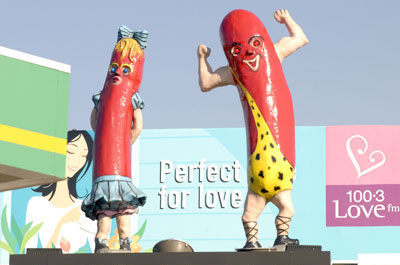
Palatine-based Concord Homes reports Concord at Jefferson Park is one of the only developments on Chicago’s North Side offering large new single-family homes priced from the low $600s. The houses have at least four bedrooms, 3.5 baths, finished lower levels, two-car garages and base prices in the low $600,000 range. Single-family homes offer 3,267 square feet and are base priced from $603,490, while rowhomes are 2,200 square feet and start in the $420s.
As of early July, 17 of the rowhomes and 12 of the single-family homes remained to be sold. “It’s right on track,” says Jim Vanderploeg, division president of Concord Homes. Convenient transportation was a primary factor in selecting the site, Vanderploeg says. Concord at Jefferson Park is a 10-minute walk to two Metra stations and the Jefferson Park Blue Line station, and it’s mere feet from both the Kennedy and Edens expressways.
Concord Homes sees the development as appealing to an emerging population of buyers attracted to living on the outer edges of the city. “For people who don’t want to live downtown, they can live in close proximity to downtown, a 10-minute drive or 15 minutes by public transportation,” Vanderploeg says. “We’ve seen buyers specifically wanting to go to the city area, where they can enhance their cultural lifestyles, and be closer to downtown amenities, without having to buy a condo in a highrise building. (Another) buyer we’ve seen gravitating to those areas is the suburban empty nester coming from the outer edges of suburbia, not wanting to go to the condominium marketplace but wanting a little bit of a yard.”
The first buyers to arrive at Concord at Jefferson Park were Dr. Tom Albert and his wife Dora, who moved into their new rowhome on Nov. 1, 2004.
Dr. Albert says that he and his wife were lured by prices $100,000 lower than those for townhomes half a mile east, as well as the proximity to both the Kennedy and Edens expressways. “Out my front door, I can be on either the Kennedy or Edens in about a minute,” Albert says.
“We came from Ukrainian Village, which is an up-and-coming neighborhood,” Albert says. “But we wanted a more established community. We’re close enough to the expressway that we can jump on it and go downtown, and we still do that a lot.”
Lawrence a Key Artery
Much of the new construction underway in Jefferson Park is situated along Lawrence Avenue. Not far from Concord at Jefferson Park, the site of a former heating and air conditioning business at 4810 N. Lavergne Ave. is giving way to Kennedy Estates, says Barbara Buchel, of Jameson Realty Group, sales and marketing agent for the development.
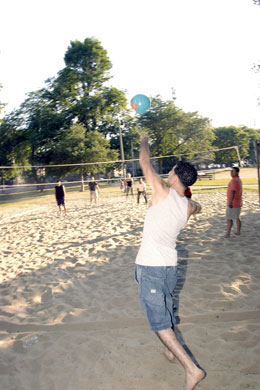
Scheduled to break ground this summer and be completed in June 2006, the six-story Kennedy Estates will feature 20 two-bedroom condos and two penthouse units above ground-floor retail. The building will feature a rooftop deck, an exercise room and a heated garage. Prices start at $339,000 for the two-bedrooms and go up to $500,000 for the penthouses.
Despite the new burst of development and rapidly rising prices, however, Jefferson Park is still a quintessential Chicago neighborhood, or what used to be considered quintessential Chicago – a community with color, variety and a certain down-to-earth quality that’s becoming hard to find in much of the city.
Back at the Gale Street Inn, owner George Karzas says this neighborhood spirit is alive and well at his establishment.
“I have a business where everyone comes to my restaurant,” Karzas is saying back at the Gale Street Inn. “I have old people and young people, doctors and laborers, yuppies and politicians. You’ll see a copper next to a suit, and a lady with a stroller next to a senior citizen. That’s a tribute to the restaurant – the food is good – and it’s a metaphor for the neighborhood. It’s just real.”
